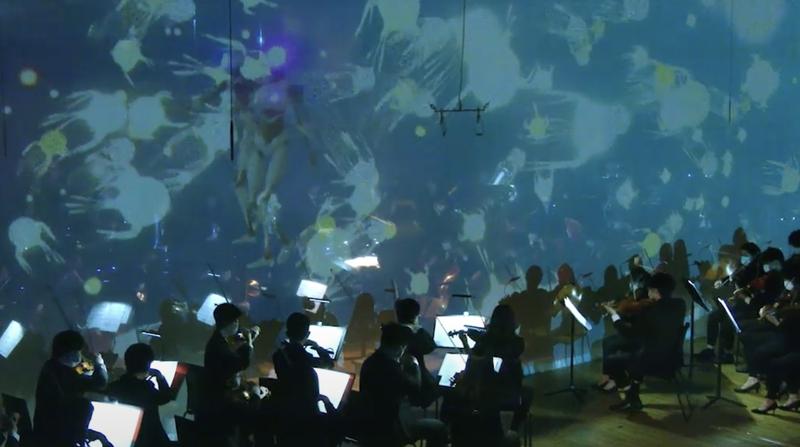August 10, 2022
HONG KONG – Hong Kong Baptist University on Tuesday unveiled the world’s first AI ensemble – the Turing Al Orchestra (TAIO), featuring a hybrid of artificial intelligence technology and arts.
The orchestra, using state-of-the-art AI technology, is formed by human and AI systems.
Making its debut at the “Human, Machine, Art, Creativity: International Symposium” co-organized by the university and the Hong Kong Productivity Council, the orchestra will perform a human-machine collaborative show in Hong Kong this Christmas and travel to Europe or the United States for symphonic performances within one year, said Guo Yike, vice-president (research and development) of HKBU.
On July 14, the school held a concert, featuring a performance by a human and an AI-driven machine.

HKBU holds a concert featuring a performance by a human and an AI-driven machine on July 14, 2022. (PROVIDED TO CHINA DAILY)
At the concert, an AI virtual choir collaborated with the HKBU Symphony Orchestra to perform a newly arranged choral-orchestral version of Pearl of the Orient, a song praising Hong Kong’s beauty composed by the Taiwanese singer and songwriter Lo Ta-yu.
It was the world’s first AI choir to perform a choral piece with Chinese lyrics, Guo said, adding that his team also developed another AI artist to create visual narratives and images based on its “imagination” of the song’s lyrics and music.
In addition, the team trained an AI-generated dancer and programed it with previously collected movement data. The dancer then performed a ballet dance at the concert.
Outlining the concept of the TAIO, Guo said it would use artworks to promote scientific research and use scientific research to innovate artworks, challenging or even subverting human beings’ current art forms.
It puts the team’s vision into practice via creative performances in active international collaboration. Using blockchain technologies, TAIO will realize the world’s first Decentralised Autonomous Organisation ecosystem for art creation through collaboration between scientists and artists.
Guo Yike, vice-president (research and development) of HKBU
“It puts the team’s vision into practice via creative performances in active international collaboration. Using blockchain technologies, TAIO will realize the world’s first Decentralised Autonomous Organisation ecosystem for art creation through collaboration between scientists and artists”, Guo said.
TAIO is a crucial deliverable of a 5-year research project led by Guo, entitled “Building Platform Technologies for Symbiotic Creativity in Hong Kong”, which got a HK$52.84 million ($6.73 million) research fund awarded by the Theme-based Research Scheme under the Research Grants Council.

Guo’ team trains an AI-generated dancer to perform a ballet dance at a concert on July 14, 2022. (PROVIDED TO CHINA DAILY)
Guo said this is the first time the Research Grants Council has allocated major funding for an art-tech project. The research project will also initiate an art data repository, a generative Al algorithms system, a research theatre, and some unique and creative application projects.


